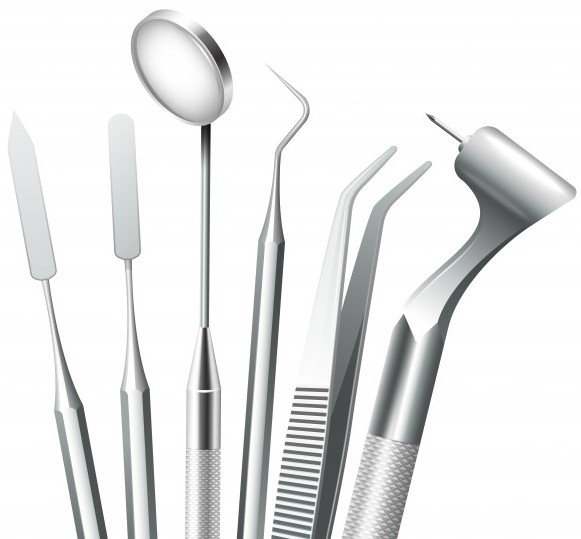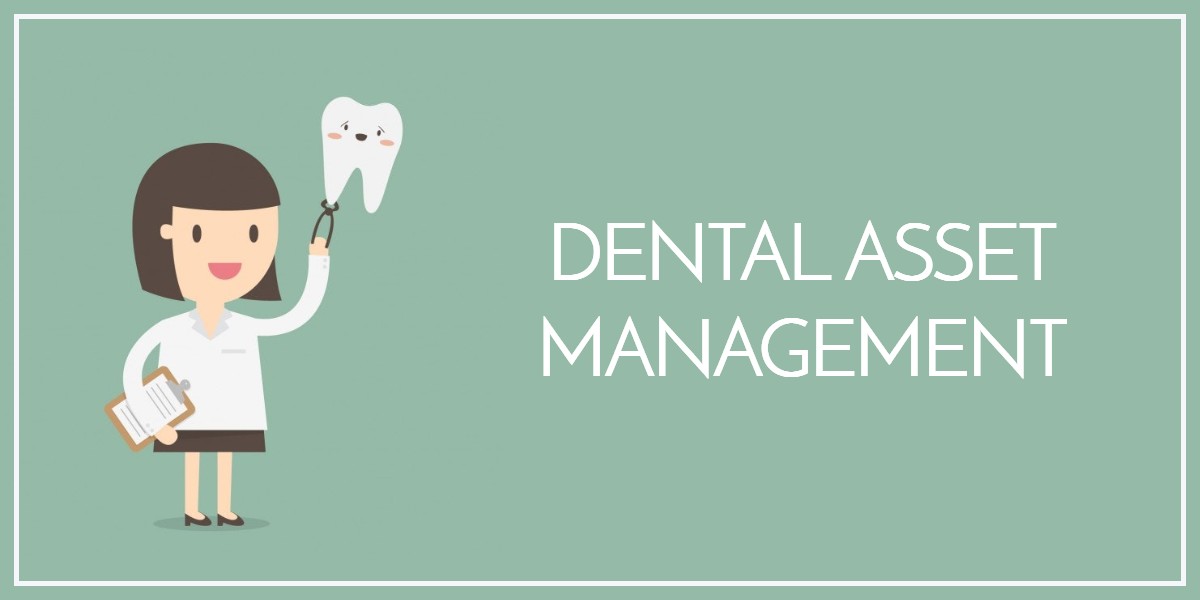What are the challenges of dental asset management?
The dental industry is a prominent part of the healthcare sector and is also one of the highest paying employment opportunities. In light of expected future growth, both private and public dental centers are building up their practice by introducing innovative operational services.
To back up these ambitions, you need to invest in the latest machines and assets. Dental equipment comprises of more than just the technologies used to treat patients. It also includes utility systems to provide power, disinfection utensils to meet control protocols, and other small portable tools.

To get started with dental asset management, dental assets can be divided into the following categories:
- Surgical microscopes
- Dental engines
- X-ray imaging equipment
- Sterilization equipment
- 3D imaging systems
Tracking all of this equipment with so many employees in an institution can be a pain. Here is what dental centers have to contend with:
- Missing inventory: When you aren’t monitoring your work operations along with your asset utilization, you are likely to become a victim of theft or misplacement. To lower the risks of fraudulent activities, opt for both an automated and manual system. This way you can tag all your tools and control usage.
- Risk of infections: Unsterilized equipment poses a threat to both patients and dental staff – sometimes even leading to death. This is why you need to ensure that health and quality standards are being upheld at all times.
- Drug shortage: Unpredictable pharmaceutical fluctuations are common in the healthcare industry and result in drug shortages. Such occurrences distort the dental supply chain and lead to arranging costly backups.
The best way to tackle such roadblocks is to pay attention to how you utilize your tools. Practitioners should carefully devise a dental asset management plan for their equipment. With proper processes in place, you will be able to control your costs, increase your ROI, and weed out any ongoing malpractice.
Importance of quality analysis for dentistry
Healthcare providers make countless efforts to uphold the quality standards laid down by regulatory bodies. They carry out performance measures to evaluate their service standard and suggest improvements. For reliable quality analysis, many oral health centers have automated their processes with 43% institutes spending a total of 10% of their budget on digital technology.
To attain uniformity in health standards, the Institute of Medicine (IOM) Committee on Quality of healthcare in America, defines six objectives: safe, effective, patient-centered, timely, efficient, and equitable. Here is what they entail with reference to your assets:
- Safe care: Avoid bringing harm to patients from your services and equipment. Always ensure your equipment’s functionality.
- Effective care: Use scientific knowledge to optimize internal processes to provide impeccable care.
- Patient-centered care: Provide responsive care to your patients and always put their needs first. Introduce equipment according to patient demand.
- Timely: Reduce the waiting time for both patients and dental staff by reducing the time spent on arranging surgical tools.
- Efficient: Avoid wastage by optimizing equipment usage and monitoring equipment lifecycle so you can cut down on early disposal of malfunctioned machinery.
- Equitable: Do not discriminate between patients on the level of care that you provide them.
Achieving these six objectives is pivotal for dental centers to achieve transparency in their functions and raise overall productivity. A systematic dental asset management plan will help you make your practice compliant with these standards.
Benefits of dental asset management

As laid down by the American Dental Association (ADA), the ultimate aim of any dental services provider is to ensure patient safety and satisfaction. Deploying a system to manage dental equipment has a positive impact on all operational procedures and propels you to achieve this goal. Using a program to run oral healthcare infrastructure has the following benefits for dentists:
- Streamlined records: Keeping track of all items in your inventory can be tedious if you don’t regularly update your database. How many alloy capsules did you order and how many are left? An automated dental asset management system helps maintain updated records so you can always right-size your inventory.
- Implementing a tag system: A cloud-based system lets you choose between 3 labeling options: RFID, QR codes and barcodes. Each tag can be designed to contain useful information about the asset. For instance, you can add expiry dates for drugs to the barcode sticker so you know when they’ve gone bad.
- Ability to scale: Most automated management systems are scalable and allow you to grow without switching between resources so you can maintain your original database. This is critical for institutions which are looking to expand in the near future.
Key features of an asset management plan
A comprehensive tracking program is a single solution that caters to many needs. Here are five essential features you should include in your dental management plan:
Check-in and checkouts to improve visibility
After opting for a dental asset management solution, dental professions need to implement best practices. The first step is to assign an identification to each tool. With simple barcodes, you can attach customized data with all your equipment. Most healthcare facilities choose these for low-value tools as they are efficient and easy on the budget.
You can also use barcodes to monitor check-in and checkouts. For instance, a root canal is scheduled for a day and your staff wants to checkout a Downpack Handpiece. Simply scan the equipment tag against the user in your database to record this activity!
Such practices help outline ownership and lower the risks of misplacement and theft. Instantly updated information will also help create asset usage trails. Easily determine which assets are being used more frequently so you can always restock them in advance.
Procurement alerts for timely replenishment

A dental clinic has several different types of supplies stocked up in inventory. Dental staff needs to frequently replenish items like cotton gauze, disposable syringes, and applicators. But overstocking is as damaging as understocking. Excess stock ties up monetary resources while low reserves can cause delays in daily operations.
The key is to maintain a balance. An automated dental asset management system allows you to run inventory modules so you always have just enough of everything. Based on usage history, set low-level stock alerts for each item so relevant personnel are notified when you are about to run out of an item.
The main challenge is identifying the right time for stock replenishment. Once this happens, vendors are contacted and purchase receipts are generated. Eliminate the chances of running out of supplies so none of your appointments are delayed.
Schedule maintenance events to lower downtime
All physical assets and equipment are subject to wear and tear during their useful life. Without proper service, many companies dispose of equipment that was meant to have a much longer useful life. Equipment can also breakdown between operations and can disrupt the entire appointment. Worse, poorly maintained equipment can also pose a threat to patient safety.
All these are in violation of the healthcare standards laid out by the IOM. Without optimized asset management, you cannot provide safe, patient-centered, effective, and timely care.
Create maintenance schedules for all of your assets to cater to these problems. With dental asset management, you can set recurring repair and maintenance sessions. It is an effective way to ensure that none of your tools miss out on their sterilization appointments.
You can also send out maintenance alerts to doctors and nurses so that alternate arrangements can be made during equipment downtime. Gain the following oral healthcare benefits through robust maintenance:
- Extended asset lifecycle across the facility
- Less large-scale machinery repairs
- Lower risk of infection by maintaining regularly sterilized equipment
Record bin locations to control storage
Whether you’re operating from a single clinic or multiple healthcare centers, knowing where your equipment is extremely important. Every institution has its own way of stocking up assets and inventory items but if you lose track of their storage points, daily procedures face delays.
To deal with this, add bin locations for every asset that you check-in to the system. This way, your database can store information for all tools so no one has to waste time looking for equipment. Moreover, if you want to send out any equipment to a nearby dental center, you can easily monitor positioning data on a cloud-based program. Real-time coordinates increase transparency and allow for seamless asset distribution.
Create bundles to run seamless dental procedures
Dental teams often use a collection of tools at one time. This is because different kinds of operative procedures require different sets of equipment. These need to be hunted right before a procedure which is a tedious task for the staff.
Bundle them up to increase your operational efficiency! As an example, infection bundle contains latex and nitrile gloves, patient bibs, latex masks, sterilization pouches, and a barrier film. By checking out all these at once, you can save time and update the same basket of assets in case of upgrades.
An automated system lets you create task-specific product packages so you don’t have to worry about collecting everything at the last moment. Carry out streamlined workflows with bundles.
Gain compliance the right way

The Health Insurance Portability and Accountability Act (HIPAA) has formulated a set of rules and regulations for all medical institutions. Compliance with HIPAA guidelines is essential if you want to safeguard your records from unauthorized breach attacks.
Conduct frequent audits to single out any discrepancies. Audits help monitor equipment history for your entire inventory so you can access custodian information for any duration. Doing this not only makes your data secure but also helps optimize processes. Meeting the HIPAA standards can be quite complex, here are 3 best practices you can implement to gain improved outcomes:
- Understand compliance regulations: Dentists should be eco-conscious and wary of the toxins that their practice releases into the environment. For this purpose, you need to ensure that your clinic is EPA compliant. Check your drugs for any harmful chemicals at the end of their lifecycle with an audit.
- Lay down compliance policies: Dental centers need to devise certain strategies to gain compliance. For instance, if your aim is to attain tax compliance, you should be able to calculate the precise financial worth of an asset at any point in time. Putting in place a dental asset management system that accounts for depreciation and maintenance comes in handy here.
- Use secure third-party solutions: If you wish to outsource your dental records to a third party, make sure that you choose a trustworthy vendor. Most data breaches are caused by security vulnerabilities in third-party software. Make sure that the vendors are transparent about their security and privacy guidelines. Hold training sessions for compliant requirements so your staff is always well-informed.
Every dental practice should invest in dental asset management
To run a successful dental practice, you need to have effective asset management in place. Once you have access to accurate records, you can use them to run in-depth reports to forecast future trends and requirements. This is especially helpful when a huge chunk of your capital is spent on specialized equipment.
EZOfficeInventory is a dental asset management software which allows you to establish best practices. Implement the desired plan today to maximize patient safety and gain professional satisfaction.







